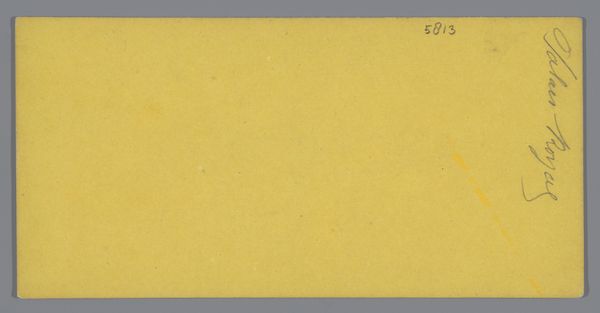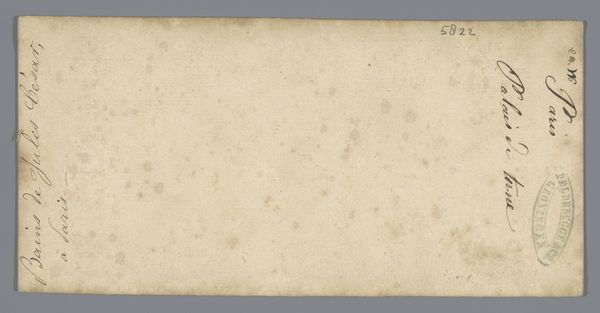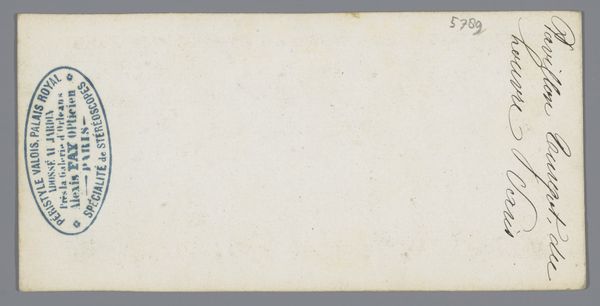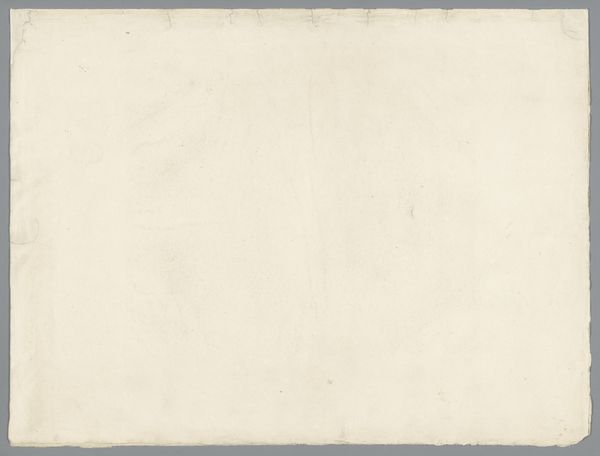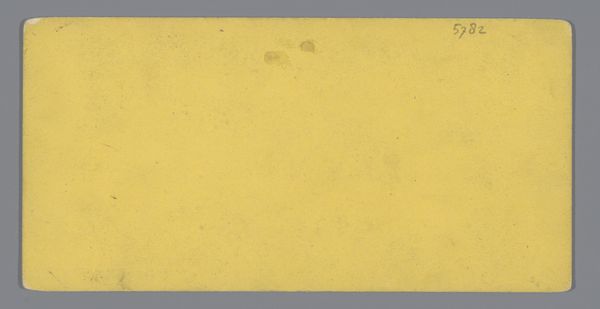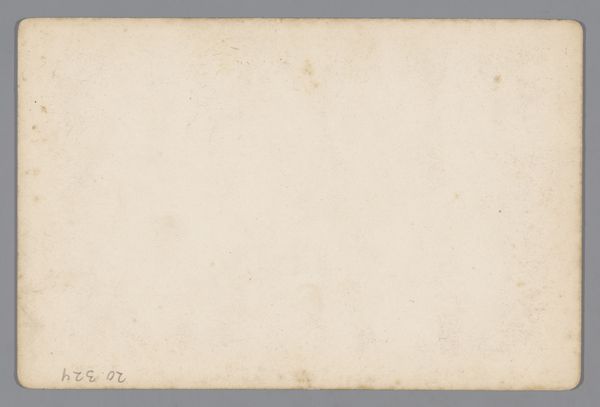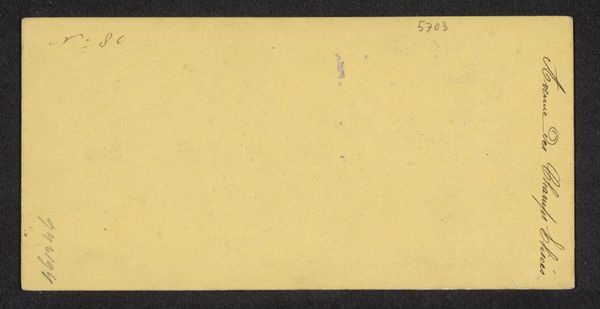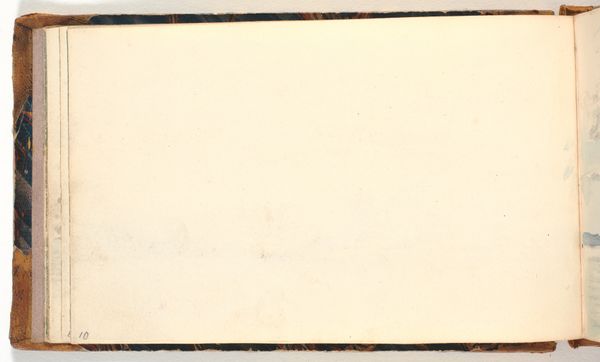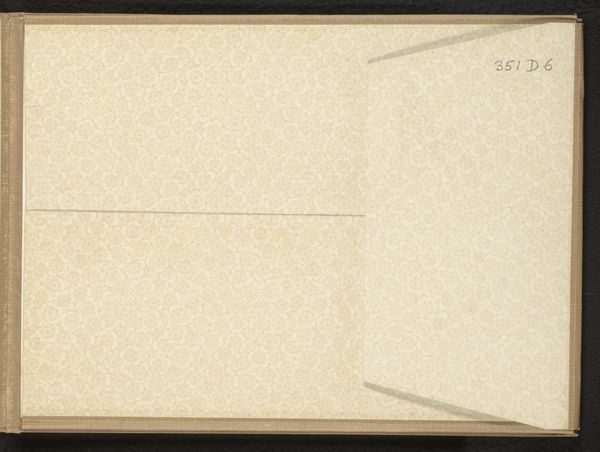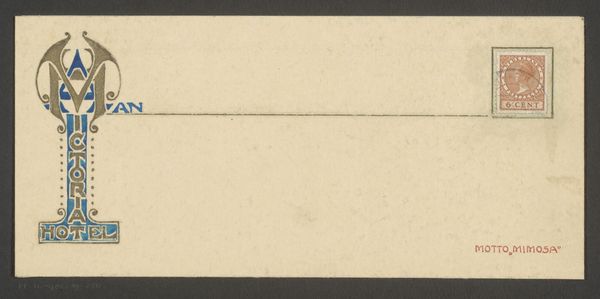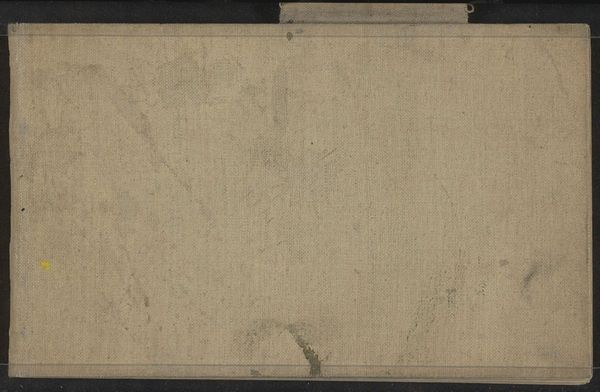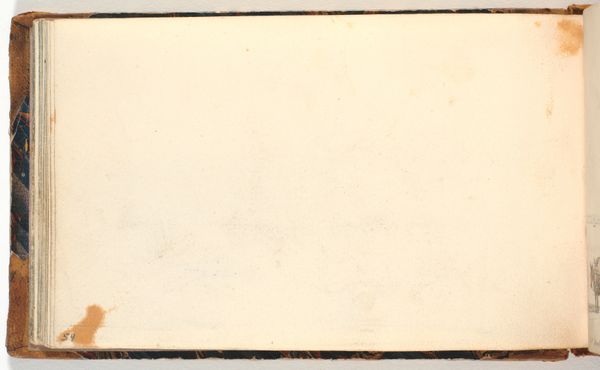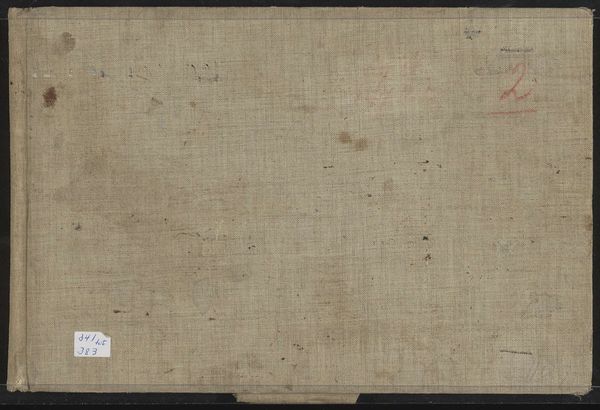
Gezicht op het treinstation Gare du Nord in Parijs c. 1850 - 1880
0:00
0:00
drawing, paper
#
drawing
#
paper
Dimensions: height 84 mm, width 173 mm
Copyright: Rijks Museum: Open Domain
Curator: What immediately strikes me about this work is its unassuming nature. The ochre paper is almost as striking as the faint lines suggesting a cityscape. It’s called "Gezicht op het treinstation Gare du Nord in Parijs," and dates from somewhere between 1850 and 1880. Editor: Ochre, yes, almost like the aged paper is part of the intended affect. Knowing its subject – a train station in Paris – positions it in a potent moment of societal shift, where technological advancement met the daily lives of individuals. Curator: Indeed, and being a drawing, made with such modest materials, speaks to the accessibility, perhaps even disposability, of image-making at this time. The use of paper situates it more as ephemera. Editor: Exactly. Consider who was represented at the Gare du Nord: the transit point for labor, for immigration, and exile. I wonder who this artist saw there. It prompts questions around representation and whose stories are centered – or erased – within dominant historical narratives. The sketch hints at a grand façade but also immense movement and social upheaval. Curator: I agree. One sees it both ways. The Gare du Nord itself represents not just travel and commerce, but the material conditions enabling those. I find myself wondering about the specific drawing tools employed here. Editor: Tools tied to power. The ability to sketch and document, even fleetingly, suggests an economic positioning that must be recognized and held to the broader patterns of control and spectatorship of 19th century Paris. It underscores that viewing always takes place within hierarchies. Curator: Thinking about the paper, the support of the art becomes so important: its color, age, source... The art relies on that very humble yet essential backing. Editor: Precisely! The simplicity can easily make one miss the broader historical tensions simmering beneath the surface. It serves as a stark reminder to confront the underlying dynamics influencing the narratives we inherit. Curator: Absolutely, it really speaks to the subtle power of drawing—how a readily available tool can encapsulate such vast societal and political changes through a simple means of production. Editor: Right—an apparently minor study on paper invites some far more significant investigations into class and identity.
Comments
No comments
Be the first to comment and join the conversation on the ultimate creative platform.
